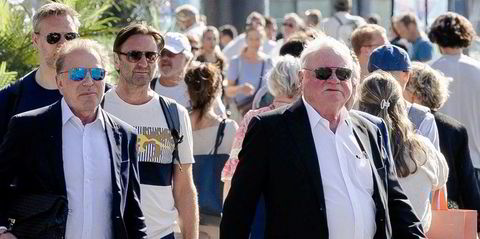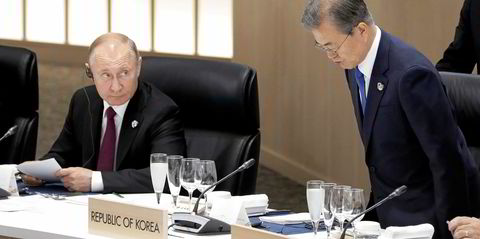The Norwegian Guarantee Institute for Export Credits (Giek) has sought quotations to sell off parts of its NOK 98bn ($11.5bn) portfolio, of which $9.9bn is exposed to offshore.
The offshore crisis has battered shipowners relentlessly, forcing some into bankruptcy and the majority into complex restructurings, but creditors have unloaded relatively little exposure in the secondary markets.
GIEK chief executive Wenche Nistad says the guarantee institute has not sold anything from its offshore portfolio yet.
“But we are thinking about it. We have got some quotations and it is something we are thinking about since we are so much exposed. It might be a good idea to offload some of it,” said Nistad.
“I think if we do it, we will only do it on international transactions, where the export has taken place and where we don’t have any responsibility for what they will be doing really. For the Norwegian offshore service industry, we wouldn’t do it.”
Nistad made the comments at Marine Money’s 19th annual Ship & Offshore Finance Forum in Oslo — during the “restructuring, runway and reality” discussion led by BA-HR partner Richard Sjoqvist.
Also on the panel were DNB shipping and offshore head Kristin Holth, Sparebank 1 Markets investment banking head Ove Gusevik, DVB Bank senior vice-president Ronny Gothesen, Ernst & Young partner Donald Featherstone and NIBC Bank oil-and-gas head Sven de Veij.
In terms of secondary markets, several panellists argued for more liquidity, while there was some reservation that it would take off soon.
“In the end, although owners might not like banks selling off, because they have established a relationship, it can help the industry, as well, the more liquid the market is. It is easier for banks to step in, knowing that, if necessary, they can step out. It is a bit of give and take for owners,” said De Veij.
Holth says DNB has been active over the years but that secondary loan markets help banks manage debt portfolios and build capacity.
“You will see more trading in the syndicates, of course, when things look bad because that is when everybody wants to get out. Now people are now a bit more fatigued and I think there is more willingness to do these types of trades,” said Gusevik.
In terms of the offshore cycle, the panellists agreed that the bottom of the crisis has arrived. They say some segments, like inspection, maintenance and repair (IMR), will rise much quicker than others, like platform supply vessels (PSVs).
“For a few years now, GIEK has thought that 2017 would be the bottom but the question is how long will it take until the market improves? We are thinking about 2020 or 2021,” said Nistad.
For restructurings, Norwegians have not addressed debt in the same fashion as the Americans. Both GulfMark and Tidewater have started a more aggressive process than has been seen in Norway. Tidewater, especially, is said to be set for one of the strongest balance sheets in the sector, when it emerges from Chapter 11.
Holth says consolidation is important for companies to save on operational costs, improve earnings and balance on the fleet.
“But that is not enough. If you see how the Norwegian companies have managed through the restructurings, they have not really deleveraged. They are still at the same debt levels and there has not been that much equity coming into the restructurings,” said Holth.
“Compare that with Tidewater and GulfMark, where you really clean up when it comes to the debt. That is what Norwegians will compete against and that’s the dilemma for the industry.”
De Veij says deleveraging must come eventually.




